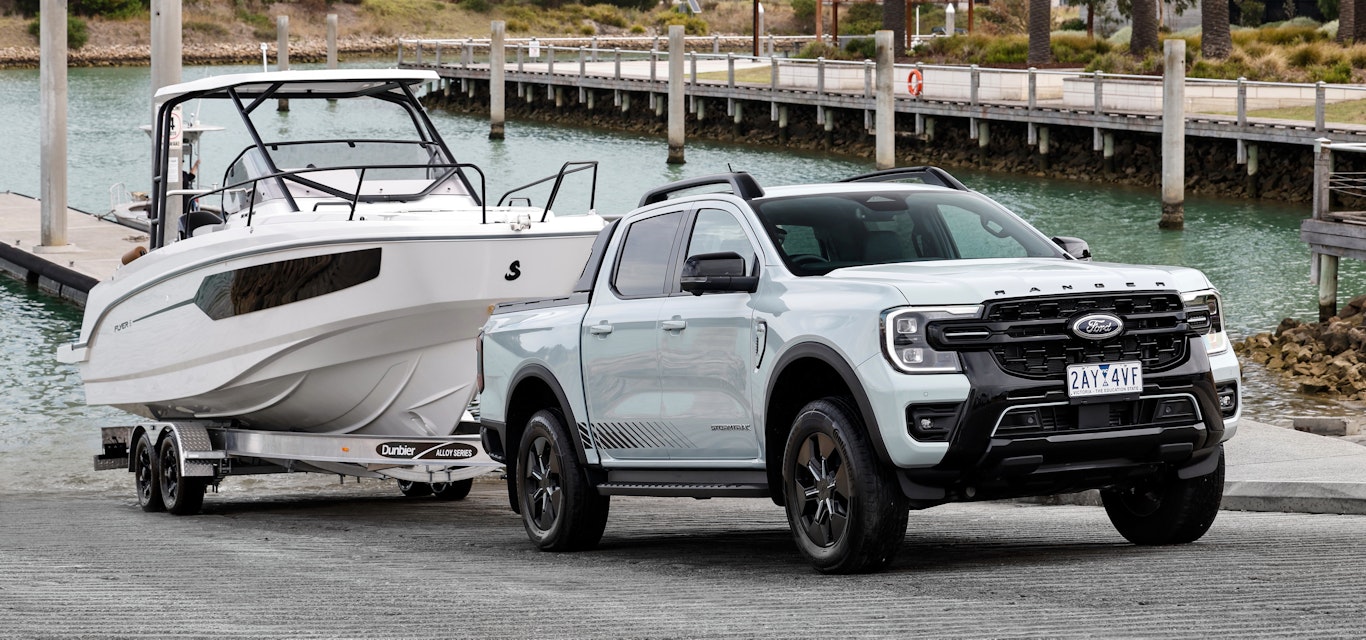Ranger recharged
Ford's best-selling ute gets a plug-in power boost. Same DNA, now with brains, brawn and battery.
This year's introduction of the Commonwealth Government’s New Vehicle Efficiency Standard (NVES) has sent many manufacturers in search of new zero- or low-emission models to help offset high-emitting models in their range.
In Ford Australia’s case, that led to the development of a plug-in hybrid electric (PHEV) version of its best-selling Ranger ute. Like the rest of the Ranger line-up, the Ranger PHEV has been designed and engineered in Australia, with Ford taking the position that its first electrified ute had to be able to do everything its ICE-powered siblings could - including deliver the same 4WD off-road ability and the same 3500kg braked towing capacity.
The resultant Ranger PHEV is visually identical to other Rangers, with the only external changes being PHEV badges on the front-wheel arches, a charging port above the left rear-wheel arch and a slightly longer tray. The powertrain combines a 2.3-litre turbocharged four-cylinder EcoBoost petrol engine and a 10-speed automatic gearbox with a 75kW electric motor and a 11.8kWh (usable) battery, the latter packaged between reengineered chassis rails.
A new Modular Hybrid Transmission (MHT) integrates the e-motor between engine and transmission, with drivers able o choose when to utilise battery power using Auto EV, EV Now, EV Later or EV Charge modes. The traction battery can be charged to full overnight using a standard household plug, delivering a pure electric range of 49km (NEDC) and combined-cycle fuel-consumption of 2.9L/100km.
The Ranger PHEV also includes a feature called Pro Power Onboard, which uses the lithium-ion battery to provide energy to power worksite equipment, campsites or even a caravan directly from twin 15-amp, 3.45kW power sockets in the tray, and a single 10-amp, 2.3kW socket in the cabin. Like its 3.0-litre V6-powered turbodiesel stablemates, the Ranger PHEV utilises a full-time 4WD system with an electronically controlled two-speed transfer case offering the choice of 2H, 4A, 4H and 4L driving modes.
There’s also a locking rear-differential for additional off-road capability in rough terrain, something we put to the test over moderately difficult tracks, which it handled easily. Open-road performance is strong, with the drivetrain switching seamlessly between electric and combustion power and the steering, ride and handling feeling just as cohesive as ICE-powered Rangers.
Combined petrol and electric power outputs totalling 207kW/ 697Nm mean the Ranger PHEV boasts more power and torque than the 184kW/600Nm 3.0-litre V6 diesel engine used elsewhere in the range. The four-variant line-up starts from $71,990 for the Ranger XLT PHEV, rises to $75,990 for the Ranger Sport PHEV, $79,990 for the Ranger Wildtrak PHEV, and tops out at $86,990 for the launch edition Ranger Stormtrak PHEV.
The specs
Make/model: Ford Ranger Stormtrak PHEV
Body Style: Dual-cab 4WD ute
Retail prive: $86,990 (RRP)
Seating: 5
Fuel consumption: 2.9L/100km (67.28g/km CO₂)
ANCAP safety rating: Not yet tested
Engine: 2.3-litre turbocharged four-cylinder petrol, 75kW electric motor, 11.8kWh (usable) battery, combined outputs 207kW/697Nm
Transmission: 10-speed automatic
Drive type: Part-time or full-time four-wheel drive
Kerb weight: 2615kg
Towing capacity: 750kg (unbraked)/3500kg (braked)
0-100KM/H: 6-8 secs (estimated)
For more, visit: https://www.ford.com.au/
